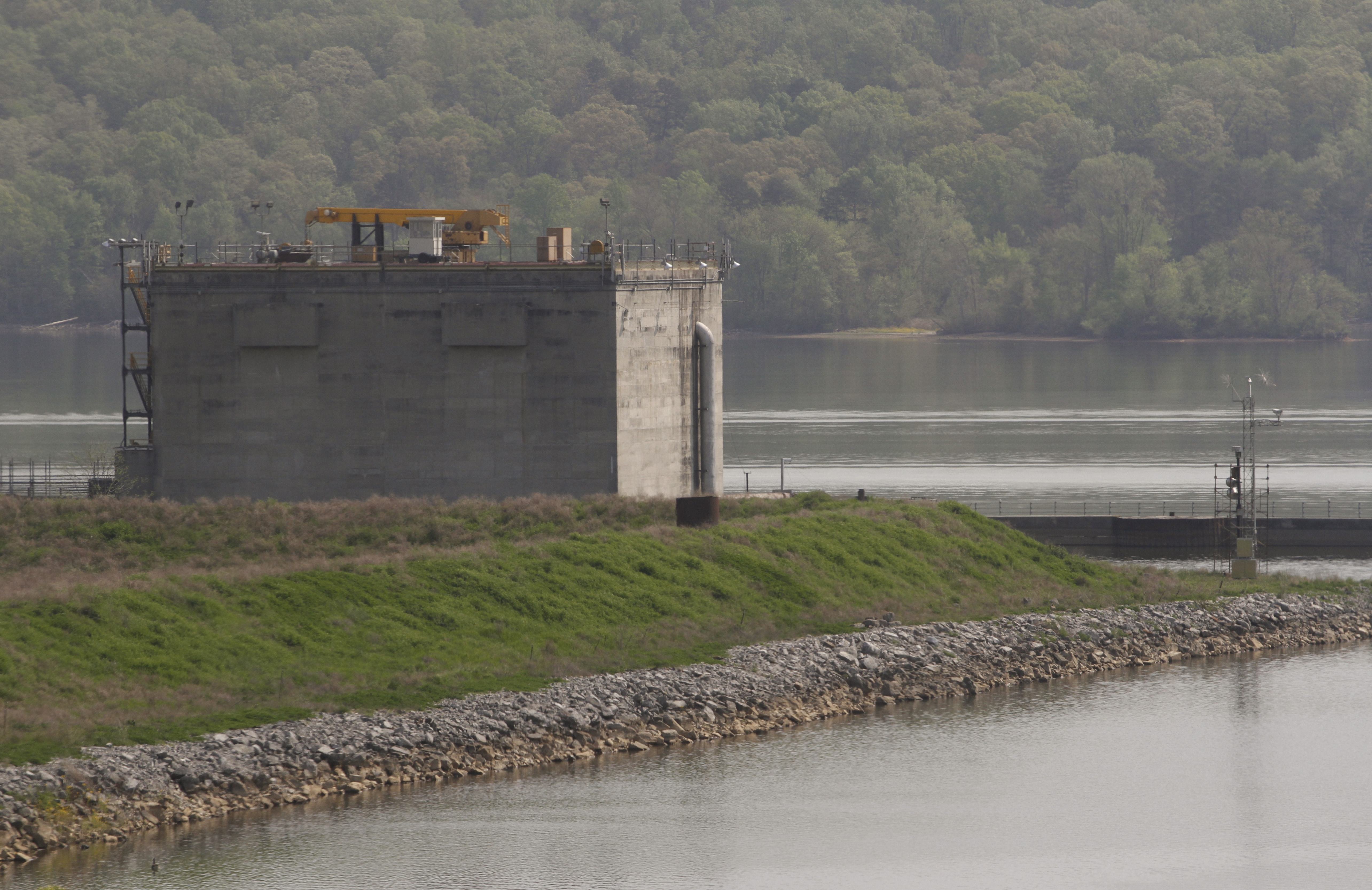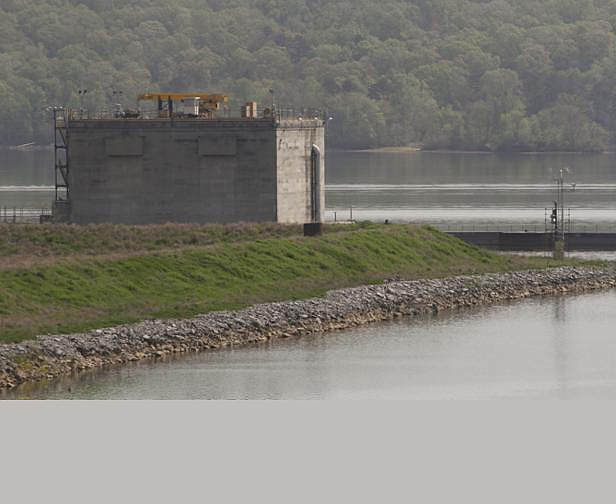 A monster flood could knock out the power in this essential raw cooling water building at Sequoyah Nuclear Plant, so TVA has added new conduit seals and door seals for added protection. In other plant areas, concrete and steel barriers protect more critical equipment and some parts, like deisel generator fill pipes, have been elevated.
A monster flood could knock out the power in this essential raw cooling water building at Sequoyah Nuclear Plant, so TVA has added new conduit seals and door seals for added protection. In other plant areas, concrete and steel barriers protect more critical equipment and some parts, like deisel generator fill pipes, have been elevated.Patrols added at Watts Bar nuclear plant
NASHVILLE - An East Tennessee nuclear power plant has added security patrols after a weekend incident in which an officer exchanged gunfire with a man who then fled on a boat.The FBI and the Nuclear Regulatory Commission are investigating the shooting that occurred around 2 a.m. Sunday at Tennessee Valley Authority's Watts Bar nuclear power plant near Spring City, Tenn., about 60 miles southwest of Knoxville.TVA spokesman Jim Hopson said security at the plant remains heightened, and more security patrols are being performed there.The incident began when a security officer was driving a routine patrol around the grounds and spotted a person on the bank of the Tennessee River, which lies on the eastern border of the facility.Boaters are allowed in the river near the facility, but are not allowed on the banks, Hopson explained. He said the officer was by his vehicle up above the bank and was talking with the man to determine why he was there when the man shot at the officer multiple times.The officer was not injured, but the gunfire broke one of the windows of the security vehicle, Hopson said. He said the officer returned fire multiple times and then got on his radio to call for assistance.- The Associated Press
ATLANTA - TVA officials were squirming a bit Monday and a few cheeks glowed pink at times as directors and inspectors with the Nuclear Regulatory Commission plied them with questions about protecting Watts Bar and Sequoyah nuclear plants from a future monster flood.
TVA spent much of the five-hour Atlanta meeting with NRC acknowledging the utility's mistakes in making flooding calculations and owning up to a culture of complacency about potential natural disasters.
The mistakes have been fixed and the complacency is gone, TVA nuclear operations chief Preston Swafford assured NRC officials.
"TVA acknowledges" the violations, "and we agree and recognize our shortfalls," Swafford said. "We recognize we were slow to respond when a resident [NRC] inspector questioned our flood preparedness."
And Joe Shea, TVA's vice president of nuclear licensing, said TVA has been guilty of "organizational overconfidence."
"TVA has made numerous mistakes and that is why we are here today," he said.
But Swafford and the other TVA officials pulled out a plan to build elevated, flood-proof, F-5 tornado-proof bunker buildings for seven custom back-up diesel generators in hopes of appeasing any judgment.
The bunkers diagram was part of a 73-page presentation filled with talking points aimed at helping TVA make the case that the utility has and is committing millions of dollars in work to keep critical cooling equipment dry at the Spring City and Soddy-Daisy nuclear plants that supply thousands of homes and businesses with electricity.
They also showed off photos of water-tight barricades around equipment and conduits neatly plugged with custom sealing gaskets. And they pledged to make permanent improvements to the four upper East Tennessee dams now raised at least 4 feet with temporary sand and gravel baskets.
TVA officials said the continuing heartbreak of Fukushima gave them new resolve to harden safety at Watts Bar and Sequoyah, where new weather and flooding models show a monster flood could send water nearly two and a half feet higher than expected at Sequoyah Nuclear Plant and more than four feet higher at Watts Bar Nuclear Plant. Such a rise could threaten electric connections for critical reactor cooling equipment.
Each plant is surrounded by well over 1 million people who live within a 50-mile radius.
Sequoyah is about 17 miles from Chattanooga, and Watts Bar is about 48 miles from the city.
Also at stake for TVA is whether the Tennessee Valley Authority comes out of the regulatory fray with some of NRC's color-coded safety findings.
In citing TVA last month, the NRC suggested that at least three of the violations might also carry yellow safety findings for Watts Bar Nuclear Plant.
Green is a normal good rating, while red, yellow and white signify highest to least safety concerns.
TVA already has one plant, Browns Ferry, under a red finding. To have two more under a yellow flag, or worse -- two more reds -- could make history. More sanctions also could lead to fines and stricter oversight.
But at the meeting's conclusion, TVA was upbeat.
"I think this was a good meeting," said Don Jernigan, senior vice president of TVA nuclear support services, of Monday's meeting with NRC.
NRC officials heard all of TVA's presentations, then drilled the utility officials for about an hour with follow-up questions about technical equations and the utility's "work culture."
Jernigan said TVA now will send NRC replies to those questions.
In closing the meeting, NRC's Leonard Wert, deputy regional administrator for operations in the Southeast, said he liked the commitments he heard.
"I'm encouraged by your comments about culture and your talk of questioning attitudes. We look forward to continuing this dialogue," Wert told Swafford and the TVA group.
NRC will made a decision about the violations and additional sanctions in about 30 days, according to NRC spokesman Joey Ledford.

